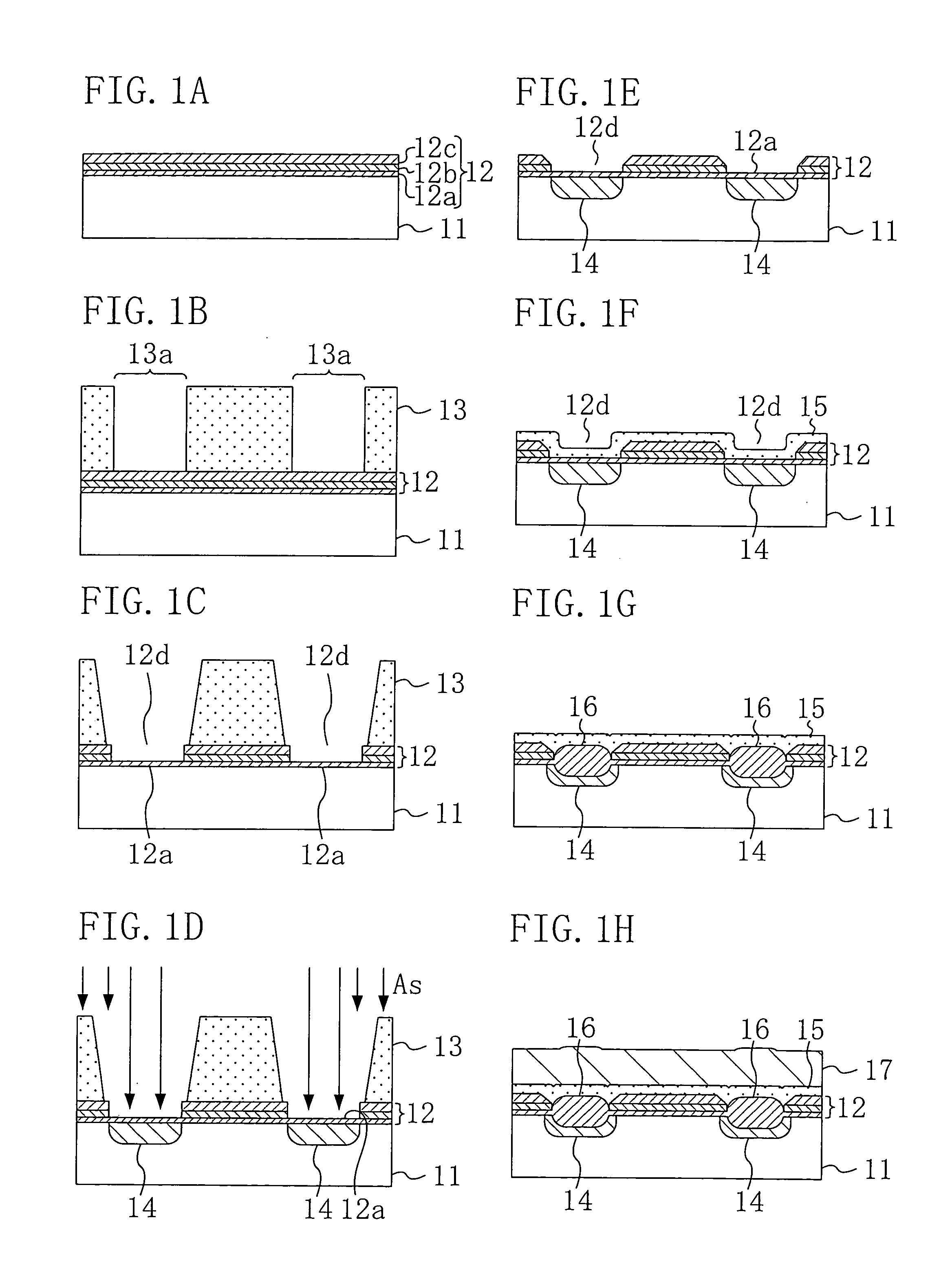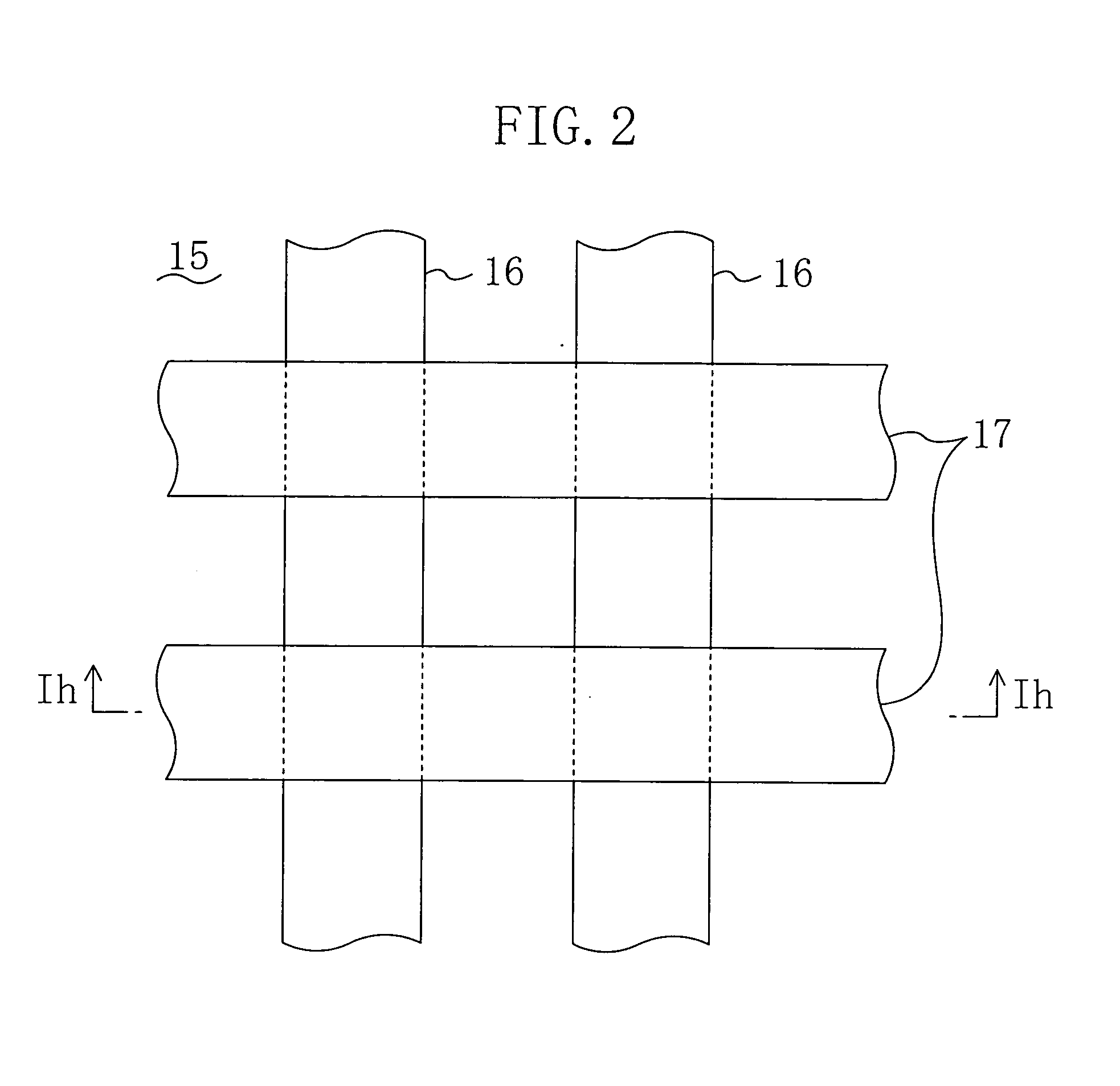Method for fabricating semiconductor device
a semiconductor device and manufacturing method technology, applied in the field of semiconductor device manufacturing methods, can solve the problems of changing the program state of the cell, degrading the data retention capability of the device, and failing to obtain desired device characteristics, so as to prevent the degradation of the data retention capability of the memory cell, improve the reliability of the semiconductor device, and prevent the threshold voltage failure of the memory cell.
- Summary
- Abstract
- Description
- Claims
- Application Information
AI Technical Summary
Benefits of technology
Problems solved by technology
Method used
Image
Examples
first embodiment
(First Embodiment)
[0047] A first embodiment of the present invention will be described with reference to the accompanying drawings.
[0048]FIGS. 1A to 1H show sectional structures of a semiconductor device in the order of process steps of a method for fabricating the device according to the first embodiment of the present invention.
[0049] Referring to FIG. 1A, first, a principal surface of a semiconductor substrate 11 made of p-type silicon (Si) is thermally oxidized in an oxidizing atmosphere at, for example, about 1000° C., thereby forming, on the principal surface of the semiconductor substrate 11, a first silicon dioxide (SiO2) film 12a with a thickness of about 5 nm. Then, for example, by a low pressure chemical vapor deposition (LP-CVD) method with a deposition temperature of about 700° C., a silicon nitride (SiN) film 12b with a thickness of about 15 nm is deposited on the first silicon dioxide film 12a. The deposited silicon nitride film 12b is thermally oxidized in an oxidi...
second embodiment
(Second Embodiment)
[0063] A second embodiment of the present invention will be described below based on the accompanying drawings.
[0064]FIGS. 4A to 4K show sectional structures of a semiconductor device in the order of process steps of a method for fabricating the device according to the second embodiment of the present invention.
[0065] Referring to FIG. 4A, first, a principal surface of a semiconductor substrate 11 made of p-type silicon is thermally oxidized in an oxidizing atmosphere at a temperature of, for example, about 1000° C., thereby forming, on the principal surface of the semiconductor substrate 11, a first silicon dioxide film 12a with a thickness of about 5 nm. Then, for example, by a low-pressure CVD method with a deposition temperature of about 700° C., a silicon nitride (SiN) film 12b with a thickness of about 20 nm is deposited on the first silicon dioxide film 12a. The deposited silicon nitride film 12b is thermally oxidized in an oxidizing atmosphere at about 1...
third embodiment
(Third Embodiment)
[0081] A third embodiment of the present invention will be described below based on the accompanying drawings.
[0082]FIGS. 6A to 6H shows sectional structures of a semiconductor device in the order of process steps of a method for fabricating the device according to the third embodiment of the present invention.
[0083] Referring to FIG. 6A, first, a principal surface of a semiconductor substrate 11 made of p-type silicon is thermally oxidized in an oxidizing atmosphere at, for example, about 1000° C., thereby forming, on the principal surface of the semiconductor substrate 11, a first silicon dioxide film 12a with a thickness of about 5 nm. Then, for example, by a low-pressure CVD method with a deposition temperature of about 700° C., a silicon nitride (SiN) film 12b with a thickness of about 20 nm is deposited on the first silicon dioxide film 12a. The deposited silicon nitride film 12b is thermally oxidized in an oxidizing atmosphere at about 1000° C. to form, on...
PUM
 Login to View More
Login to View More Abstract
Description
Claims
Application Information
 Login to View More
Login to View More - R&D
- Intellectual Property
- Life Sciences
- Materials
- Tech Scout
- Unparalleled Data Quality
- Higher Quality Content
- 60% Fewer Hallucinations
Browse by: Latest US Patents, China's latest patents, Technical Efficacy Thesaurus, Application Domain, Technology Topic, Popular Technical Reports.
© 2025 PatSnap. All rights reserved.Legal|Privacy policy|Modern Slavery Act Transparency Statement|Sitemap|About US| Contact US: help@patsnap.com



